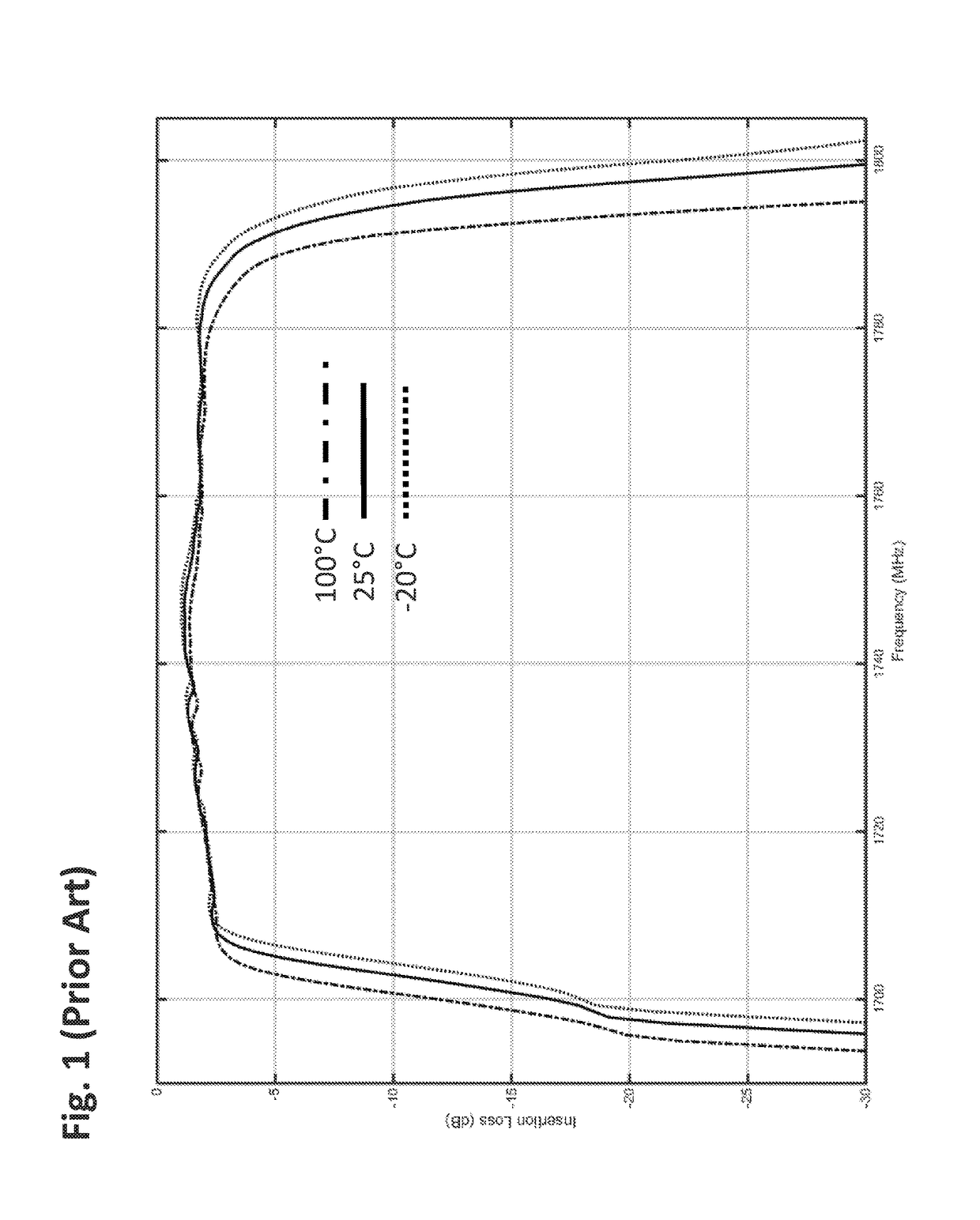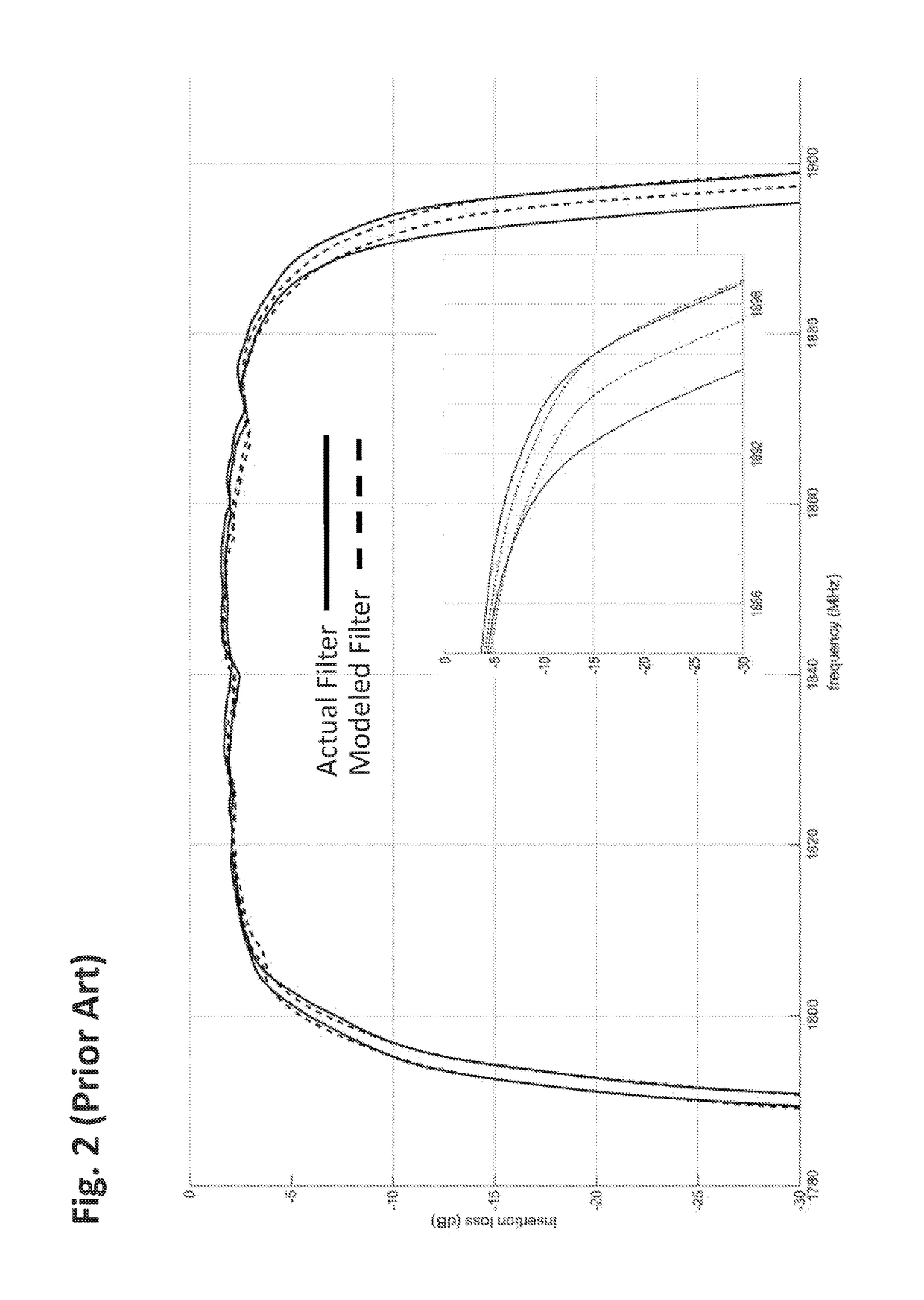Simulating effects of temperature on acoustic microwave filters
a technology of acoustic microwave filters and temperature simulation, applied in the field of microwave filters, can solve the problems of affecting the size and cost of resonators for a given, corresponding compromise in filter steepness or selectivity, and the inability to design or optimize acoustic filters consistently
- Summary
- Abstract
- Description
- Claims
- Application Information
AI Technical Summary
Benefits of technology
Problems solved by technology
Method used
Image
Examples
Embodiment Construction
[0035]The present disclosure describes a technique for designing acoustic wave (AW) microwave filters (such as surface acoustic wave (SAW), bulk acoustic wave (BAW), film bulk acoustic resonator (FBAR), microelectromechanical system (MEMS) filters)). This technique can be applied to AW microwave filters in the 300 MHz to 300 GHz frequency range, particularly in the 300 MHz to 10.0 GHz frequency range, and even more particularly in the 500 MHz to 3.5 GHz frequency range. Such AW microwave filters may be either fixed frequency and / or tunable filters (tunable in frequency and / or bandwidth and / or input impedance and / or output impedance), and may be used for single band or multiple band bandpass filtering and / or bandstop. Such AW microwave filters are advantageous in applications that have demanding electrical and / or environmental performance requirements and / or severe cost / size constraints, such as those found in the radio frequency (RF) frontends of mobile communications devices, inclu...
PUM
 Login to View More
Login to View More Abstract
Description
Claims
Application Information
 Login to View More
Login to View More - R&D
- Intellectual Property
- Life Sciences
- Materials
- Tech Scout
- Unparalleled Data Quality
- Higher Quality Content
- 60% Fewer Hallucinations
Browse by: Latest US Patents, China's latest patents, Technical Efficacy Thesaurus, Application Domain, Technology Topic, Popular Technical Reports.
© 2025 PatSnap. All rights reserved.Legal|Privacy policy|Modern Slavery Act Transparency Statement|Sitemap|About US| Contact US: help@patsnap.com



